
Concise and quick answers to questions about neuroscience and neuroscientists.
- Subject:
- Career and Technical Education
- Mathematics
- Science
- Material Type:
- Lesson
- Provider:
- University of Washington
- Date Added:
- 08/28/2023

Concise and quick answers to questions about neuroscience and neuroscientists.

The Nervous System Student Edition book is one of ten volumes making up the Human Biology curriculum, an interdisciplinary and inquiry-based approach to the study of life science.

Use this site for lots of different ideas on how to make a model of a neuron.
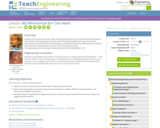
Students are introduced to various types of hearing impairments and the types of biomedical devices that engineers have designed to aid people with this physical disability.
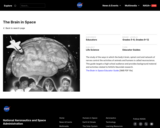
This educators guide shows students how the body's brain, spinal cord and network of nerves control the activities of animals and humans.
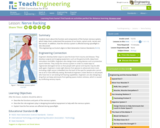
This lesson describes the function and components of the human nervous system. It helps students understand the purpose of our brain, spinal cord, nerves and the five senses. How the nervous system is affected during spaceflight is also discussed in this lesson.

This learning strategy provides discussion and visualizations of the neuron and its function, as well as components and functions of different parts of the nervous system, including the human brain.

An explanation of neurogenic shock, its symptons and treatment are discussed in this tutorial.
Khan Academy learning modules include a Community space where users can ask questions and seek help from community members. Educators should consult with their Technology administrators to determine the use of Khan Academy learning modules in their classroom. Please review materials from external sites before sharing with students.
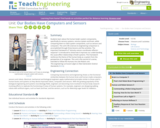
Students learn about the human body's system components, specifically its sensory systems, nervous system and brain, while comparing them to robot system components, such as sensors and computers. The unit's life sciences-to-engineering comparison is accomplished through three lessons and five activities. The important framework of "stimulus-sensor-coordinator-effector-response" is introduced to show how it improves our understanding the cause-effect relationships of both systems. This framework reinforces the theme of the human body as a system from the perspective of an engineer. This unit is the second of a series, intended to follow the Humans Are Like Robots unit.
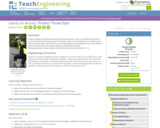
Students design and build prototypes for protective eyewear. They choose different activities or sports that require protective eyewear and design a device for that particular use. Students learn about the many ways in which the eyes can be damaged and how engineers incorporate different features and materials into eyewear designs to best protect the eyes.

Psychology is designed to meet scope and sequence requirements for the single-semester introduction to psychology course. The book offers a comprehensive treatment of core concepts, grounded in both classic studies and current and emerging research. The text also includes coverage of the DSM-5 in examinations of psychological disorders. Psychology incorporates discussions that reflect the diversity within the discipline, as well as the diversity of cultures and communities across the globe.Senior Contributing AuthorsRose M. Spielman, Formerly of Quinnipiac UniversityContributing AuthorsKathryn Dumper, Bainbridge State CollegeWilliam Jenkins, Mercer UniversityArlene Lacombe, Saint Joseph's UniversityMarilyn Lovett, Livingstone CollegeMarion Perlmutter, University of Michigan


By the end of this section, you will be able to:
Identify the basic parts of a neuron
Describe how neurons communicate with each other
Explain how drugs act as agonists or antagonists for a given neurotransmitter system


By the end of this section, you will be able to:
Describe the difference between the central and peripheral nervous systems
Explain the difference between the somatic and autonomic nervous systems
Differentiate between the sympathetic and parasympathetic divisions of the autonomic nervous system
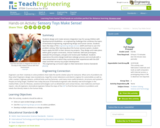
Students design and create sensory integration toys for young children with developmental disabilities an engineering challenge that combines the topics of biomedical engineering, engineering design and human senses. Students learn the steps of the engineering design process (EDP) and how to use it for problem solving. After learning about the human sensory system, student teams apply the EDP to their sensory toy projects. They design and make plans within given project constraints, choose materials, fabricate prototypes, evaluate the prototypes, and give and receive peer feedback. Students experience the entire design-build-test-redesign process and conclude with a class presentation in which they summarize their experiences with the EDP steps and their sensory toy project development.

Students learn the decibel reading of various noises and why high-level readings damage hearing. Sound types and decibel readings are written on sheets of paper, and students arrange the sounds from the lowest to highest decibel levels. If available, a decibel meter can be used to measure sounds by students.

Students follow the steps of the engineering design process to create their own ear trumpet devices (used before modern-day hearing aids), including testing them with a set of reproducible sounds. They learn to recognize different pitches, and see how engineers must test designs and materials to achieve the best amplifying properties.
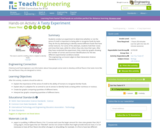
Students conduct an experiment to determine whether or not the sense of smell is important to being able to recognize foods by taste. They do this by attempting to identify several different foods that have similar textures. For some of the attempts, students hold their noses and close their eyes, while for others they only close their eyes. After they have conducted the experiment, they create bar graphs showing the number of correct and incorrect identifications for the two different experimental conditions tested.

Self-regulation skills develop gradually, and there are ways to help your child improve. This article discusses working on self-awareness, impulse control, and goal-setting to help your child learn to self-regulate.